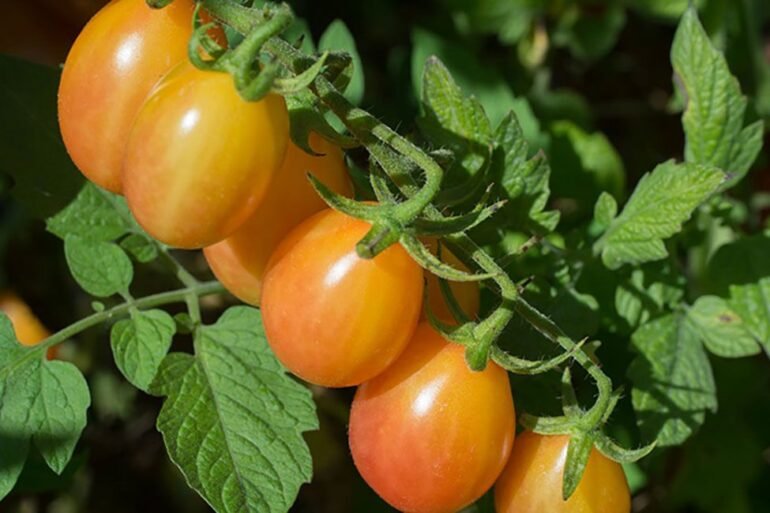:max_bytes(150000):strip_icc():format(jpeg)/Meet-Scarlet-Sunrise-the-Rutgers-Tomato-FT-BLOG0925-01-eab96378300240738c2cb497757f7f9c.jpg)
- Rutgers University has introduced a new tomato variety called Scarlet Sunrise, a bicolor grape tomato with a golden hue and reddish blush.
- Developed over more than a decade, the tomato combines the firmness of a red grape tomato with the flavor and color of a bicolor cherry.
- The sweet, crack-resistant tomato was created using traditional breeding methods and is now being positioned for commercial seed partnerships.
Rutgers University just gave tomato fans one more reason to celebrate.
In August, the university announced that after more than a “decade of painstaking research,” their team has introduced a brand-new tomato variety called “Scarlet Sunrise.”
Rutgers explained that the new bicolor grape tomato was developed through a collaboration between researchers Peter Nitzsche and Tom Orton. The tomato, the duo shared in the announcement, is a “sweet, crack-resistant tomato with a golden hue and a reddish blush.” They also said its name is inspired by the “New Jersey skies.”
“This is a great example of how our innovative Rutgers scientists collaborate with New Jersey industries to conduct research that serves communities throughout the state and region,” Josh Kohut, dean of research at the School of Environmental and Biological Sciences, shared in a statement.
According to the university, the new tomato was developed using traditional breeding methods by crossbreeding a commercial red grape tomato with a bicolor cherry tomato, which the researchers began testing back in 2012.
“We saw potential in both,” Nitzsche, an associate professor and agricultural agent for Rutgers Cooperative Extension, said. “So, we crossed them, hoping to combine the firmness of the grape with the flavor and color of the bicolor.”
The researchers noted that the process isn’t as simple as it may seem, since they had to use a method called “backcrossing” to repeatedly introduce or reintroduce specific traits like color and flavor. They tested these traits in fields and labs to combine them and determine if they were viable for real-world growth. There were also additional setbacks in 2020, the year the tomato was supposed to be introduced globally. However, the pandemic disrupted global seed distribution, further pushing back their research.
“There were times we thought it wouldn’t work,” Nitzsche added. “Everything was red. No bicolor. That’s when you get frustrated.”
Orton, an emeritus professor of plant biology, additionally noted that the real difficulty lies in attempting to crossbreed tomatoes because their “flowers are tiny and fragile.” Orton had to use tweezers to extract small parts from hundreds of plants to prevent self-pollination and instead used paintbrushes to hand-pollinate each one, turning it into his own work of art. As the team explained, the resulting tomato’s balance of sugar and acid makes it ideal for snacking.
The team is now seeking seed partnerships with commercial growers to help bring it to a broader audience and let the rest of the world taste what the Garden State has to offer. But that doesn’t mean their work is finished. “We’re always trying to improve,” Nitzsche said. “That’s what science is about.”
Stacey Leasca
2025-09-16 10:01:00

